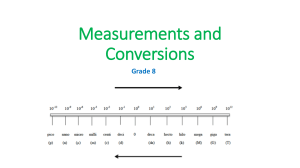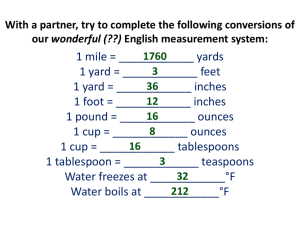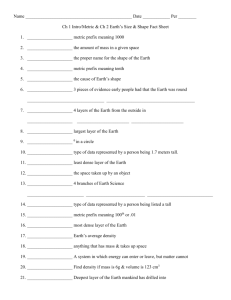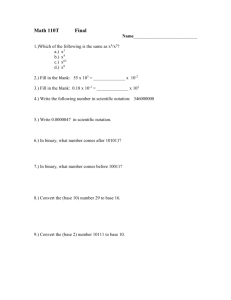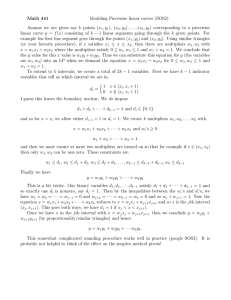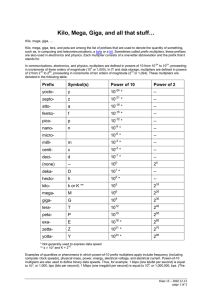HOMEWORK ANSWERS
advertisement
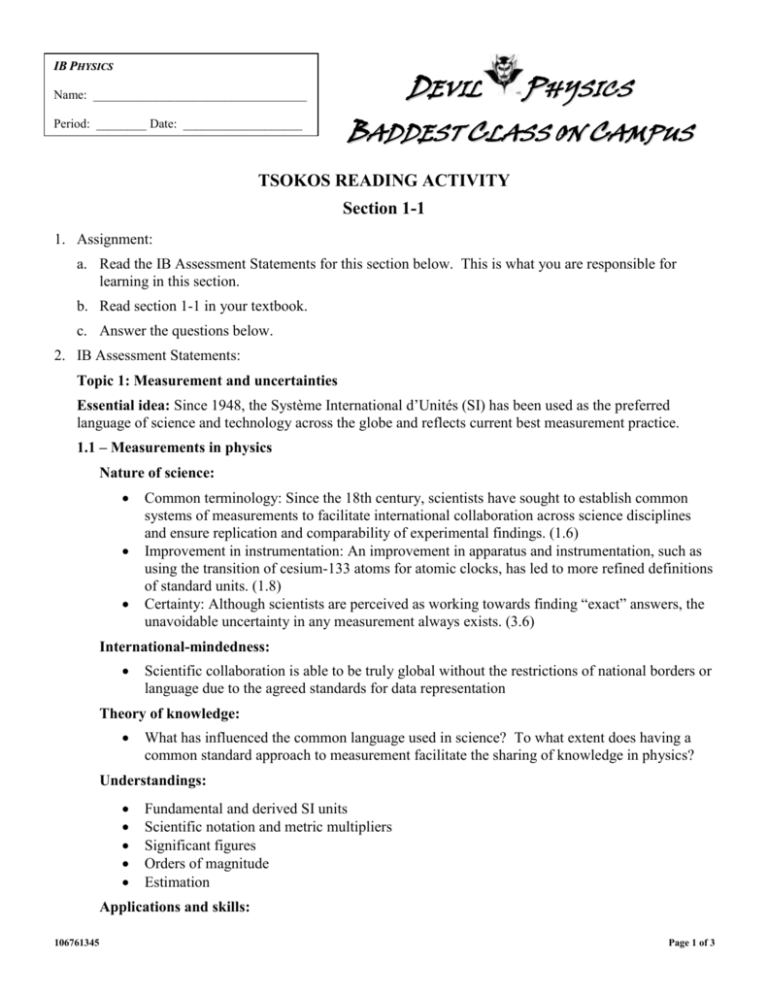
IB PHYSICS Name: __________________________________ Period: ________ Date: ___________________ DEVIL PHYSICS BADDEST CLASS ON CAMPUS TSOKOS READING ACTIVITY Section 1-1 1. Assignment: a. Read the IB Assessment Statements for this section below. This is what you are responsible for learning in this section. b. Read section 1-1 in your textbook. c. Answer the questions below. 2. IB Assessment Statements: Topic 1: Measurement and uncertainties Essential idea: Since 1948, the Système International d’Unités (SI) has been used as the preferred language of science and technology across the globe and reflects current best measurement practice. 1.1 – Measurements in physics Nature of science: Common terminology: Since the 18th century, scientists have sought to establish common systems of measurements to facilitate international collaboration across science disciplines and ensure replication and comparability of experimental findings. (1.6) Improvement in instrumentation: An improvement in apparatus and instrumentation, such as using the transition of cesium-133 atoms for atomic clocks, has led to more refined definitions of standard units. (1.8) Certainty: Although scientists are perceived as working towards finding “exact” answers, the unavoidable uncertainty in any measurement always exists. (3.6) International-mindedness: Scientific collaboration is able to be truly global without the restrictions of national borders or language due to the agreed standards for data representation Theory of knowledge: What has influenced the common language used in science? To what extent does having a common standard approach to measurement facilitate the sharing of knowledge in physics? Understandings: Fundamental and derived SI units Scientific notation and metric multipliers Significant figures Orders of magnitude Estimation Applications and skills: 106761345 Page 1 of 3 Using SI units in the correct format for all required measurements, final answers to calculations and presentation of raw and processed data Using scientific notation and metric multipliers Quoting and comparing ratios, values and approximations to the nearest order of magnitude Estimating quantities to an appropriate number of significant figures Data booklet reference: Metric (SI) multipliers can be found on page 5 of the physics data booklet Utilization: This topic is able to be integrated into any topic taught at the start of the course and is important to all topics Students studying more than one group 4 subject will be able to use these skills across all subjects 3. List the seven basic SI units, give their variable, and tell what they measure. Unit Variable What they measure 4. What is a derived unit? Give three examples along with their components. 5. For each prefix in the table below, give its power, symbol, and an real world example of where it can be used. Prefix Power Symbol Example of usage (answers may vary) attopiconanomicromillicentidecikilo106761345 Page 2 of 3 megagigatera6. Are these prefixes in your Data Guide or do you have to memorize them? 7. Give the fundamental interactions (forces) in physics expressed in pre-1972 and post-1972 terms. Pre-1972 106761345 Post-1972 Page 3 of 3
